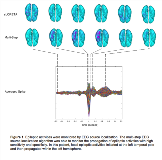Epileptic Networks Monitoring Based on Multi-Step EEG Source Localization
Abstract number :
1.210
Submission category :
4. Clinical Epilepsy / 4B. Clinical Diagnosis
Year :
2018
Submission ID :
500654
Source :
www.aesnet.org
Presentation date :
12/1/2018 6:00:00 PM
Published date :
Nov 5, 2018, 18:00 PM
Authors :
Jidong Hou, Philips Neuro; Mark Holmes, University of Washington; and Mackenzie Wise, University of Washington
Rationale: Recent studies have shown that epilepsy is a network disease where epileptic activities propagate across spatially distributed brain regions. It is of great clinical interest to monitor the dynamic of epileptic networks in order to accurately localize the epileptogenic zone and evaluate the propagation of epileptic activities, which can lead to improved diagnosis and treatment outcome. In this work we report preliminary results of epileptic network monitoring based on a novel multi-step EEG source localization algorithm. Methods: Two patients with focal epilepsy were treated with TES at the University of Washington Harborview Hospital in Seattle, WA. On each patient high-density EEG was recorded for treatment planning. From these EEG recordings, epileptiform discharges were marked as spike events and reviewed by an experienced epileptologist. Around these spike events, EEG was segmented and averaged for source localization, using both sLORETA and a multi-step EEG source localization algorithm that is based on a structured sparse model. Source activations at different time are displayed on inflated cortex to render the propagation of epileptic activities. Results: The multi-step algorithm clearly revealed the initiation and propagation of epileptic activities. In one patient (see Figure 1), focal source activities at the left temporal pole were detected as early as about half second before the peak of epileptic spike, where the EEG was in “resting state”. Epileptic activities then spread to nearby regions and propagated within the left hemisphere only. A different propagation pattern of epileptic network was observed in the other patient (see Figure 2). Extended source activities initiated at the left temporal pole about half second before the peak of epileptic spike, where the EEG is in “resting state”. Epileptic activities then jumped to the right temporal pole and propagated within the right hemisphere, and finally jumped back to the left temporal pole.On the other hand, sLORETA was not able to reveal the propagation pattern of epileptic activities due to noisy and ambiguous source localization results. Conclusions: The proposed multi-step EEG source localization algorithm is able to detect the propagation of epileptic activities with high sensitivity and specificity, which can be used to monitor the dynamic of epileptic networks. Funding: None

.tmb-.png?Culture=en&sfvrsn=eecf2414_0)